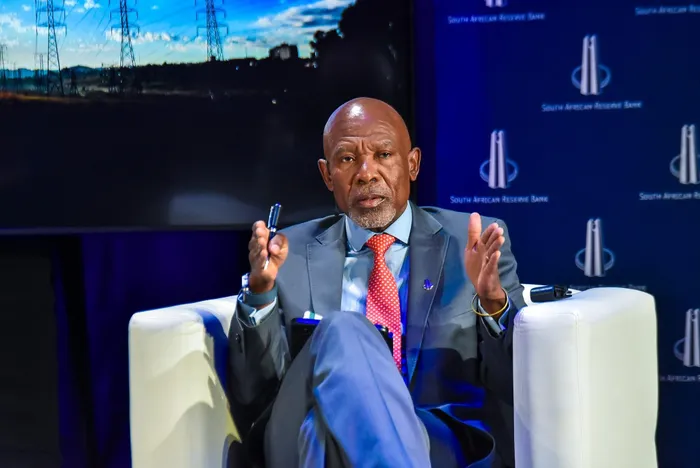SARB poised to reduce interest rates again despite inflationary pressures
MONETARY POLICY

Lesetja Kganyago, the Governor of the South African Reserve Bank. The US has not cut its interest rates this year while South Africa has cut twice, once in January and once in May, by 25 basis points each time.
Image: SARB/Facebook
The South African Reserve Bank (Sarb) is expected to moderate its monetary policy stance once more on Thursday despite mounting pressures from rising inflation, export tariffs, and modifications to administered prices.
This move would reflect the bank’s responsiveness to an evolving economic landscape, which is increasingly characterised by unpredictability.
With the annual headline consumer inflation rates remaining ticking up from 2.8% in May to 3.0% in June, analysts are closely monitoring how the Sarb will navigate the delicate balance between stimulating economic growth and curbing price escalation.
The influence of global market trends, particularly those relating to commodity prices and supply chain disruptions, cannot be overstated as these factors play a crucial role in shaping local inflationary pressures.
Market watchers on Monday were also seeking clues on potential rate cuts despite expectations of no immediate changes ahead of the US Federal Reserve's policy meeting on Wednesday.
Samuel Seeff, chairman of the Seeff Property Group, on Monday renewed his call for the Sarb to take a bold approach and provide another rate cut of at least 25 basis points.
Seeff said the current rate was still some 100 basis points higher compared to the pre-pandemic rate in January 2020, arguing that the bank's "overly cautious" stance has meant that it had missed at least two prior opportunities to cut the rate earlier.
He said the delays in cutting the rate, despite the favourable conditions, have been detrimental to the primary objective of economic growth and job creation.
“While the four rate cuts since mid-2024 have provided welcome relief to consumers, home owners and property buyers, it has had little overall impact on the economy and property market. Overall property transactions volumes for the first half of this year compared to last year are down by about 16% despite the rate cuts,” Seeff said.
The US has not cut its interest rates this year while South Africa has cut twice, once in January and once in May, by 25 basis points each time.
This narrowed the differential between US and South Africa interest rates, and reduced the relative interest rate return.
Tatonga Rusike, Sub-Saharan Africa economist at the Bank of America, said he was forecasting one more interest rate cut in July and then a hold thereafter.
“Our policy rate outlook remains unchanged. We expect the Sarb to cut the policy rate by 25 basis points on July 31 to 7% and then stay on hold for the rest of 2025,” Rusike said.
“Inflation is benign, averaging 3.5% in 2025. We are forecasting low oil ($65 per barrel) and an appreciating rand given a weakening US dollar. Risks to our call relate to oil prices and a likely move to a lower inflation target. The policy rate differential with the Fed is now at its narrowest level, limiting room for further multiple cuts.”
In its previous meeting in May, the Sarb’s Monetary Policy Committee reduced the policy rate by 25 basis points to 7.25% per annum, with the prime lending rate reducing to 10.75%, and also forecast global interest rates slightly lower this year.
Oil prices have been volatile recently following the geopolitical conflict between Israel and Iran. Oil prices spiked to $79 per barrel in mid-June. However, they have fallen to below the Sarb's forecast of $70 per barrel since the ceasefire.
Nedbank chief economist, Nicky Weimar, also predicted another cut of 25 basis points this week because inflation remains tame, saying the risks to the outlook were relatively balanced, and demand pressure on prices was timid at best.
Weimar said they still see inflation rising gradually off a low base, primarily driven by higher food prices, but contained by low fuel prices,a steady rand, and patchy domestic demand.
“Since the May MPC meeting, the risks to the inflation outlook still appear broadly balanced. In our view, food prices pose the most significant upside risk over the near term,” Weimar said.
“Furthermore, international oil prices have fallen to around $70 per barrel as the focus shifted from the conflict in the Middle East to underlying market fundamentals.
“We expect the dollar to tread water for a while, frozen in place by policy uncertainty. By implication, we forecast a relatively steady rand. Finally, the domestic economy remains sluggish, and there is no evidence of significant demand pressure on prices.”
BUSINESS REPORT